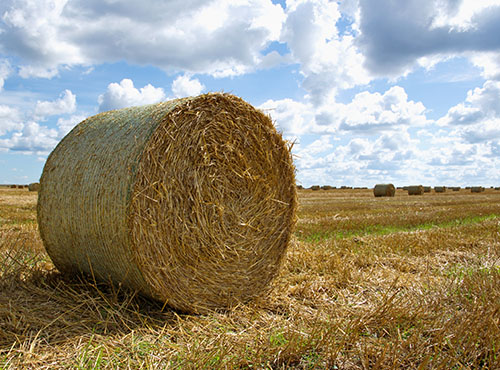Checking your Hay’s Nutritional Value
Aug 29, 2022

Hay is the foundation of our livestock’s diet — from goats to horses, many farm animals require some sort of forage in their diet. Most farmers would not dare purchase a bagged feed or supplement without checking the nutritional facts, so why skip out on finding out the same about your hay? Testing your hay is the only way to know the nutritional value, allowing you to compensate for deficiencies, imbalances, and possible excessive components.
Having your hay analyzed provides crucial information about levels of protein, minerals, digestible and indigestible fiber, and sugar and starch levels. The results reveal what may be deficient or excessive in the diet, including non-structural carbohydrates (NSC). From an equine standpoint, knowing what is in your hay can be critical in terms of a metabolically challenged horse, mule, or donkey; when feeding untested hay, the simple process of soaking hay is alleviated if the NSC is 10% or below.
When collecting hay samples to be tested, be sure to grab small samples from the middle of a bale out of multiple bales (if a hay drill is not available). This will give a more accurate reading from a load of hay altogether rather than just one bale.
When samples are collected, you can drop them off at your local Co-op store or simply mail them to your preferred analytics laboratory. For example, Equi- Analytical Laboratory Services and Dairy One Forage laboratory are both great options for hay analysis.
For more content like this, check out the latest issue of The Cooperator.
Having your hay analyzed provides crucial information about levels of protein, minerals, digestible and indigestible fiber, and sugar and starch levels. The results reveal what may be deficient or excessive in the diet, including non-structural carbohydrates (NSC). From an equine standpoint, knowing what is in your hay can be critical in terms of a metabolically challenged horse, mule, or donkey; when feeding untested hay, the simple process of soaking hay is alleviated if the NSC is 10% or below.
When collecting hay samples to be tested, be sure to grab small samples from the middle of a bale out of multiple bales (if a hay drill is not available). This will give a more accurate reading from a load of hay altogether rather than just one bale.
When samples are collected, you can drop them off at your local Co-op store or simply mail them to your preferred analytics laboratory. For example, Equi- Analytical Laboratory Services and Dairy One Forage laboratory are both great options for hay analysis.
For more content like this, check out the latest issue of The Cooperator.